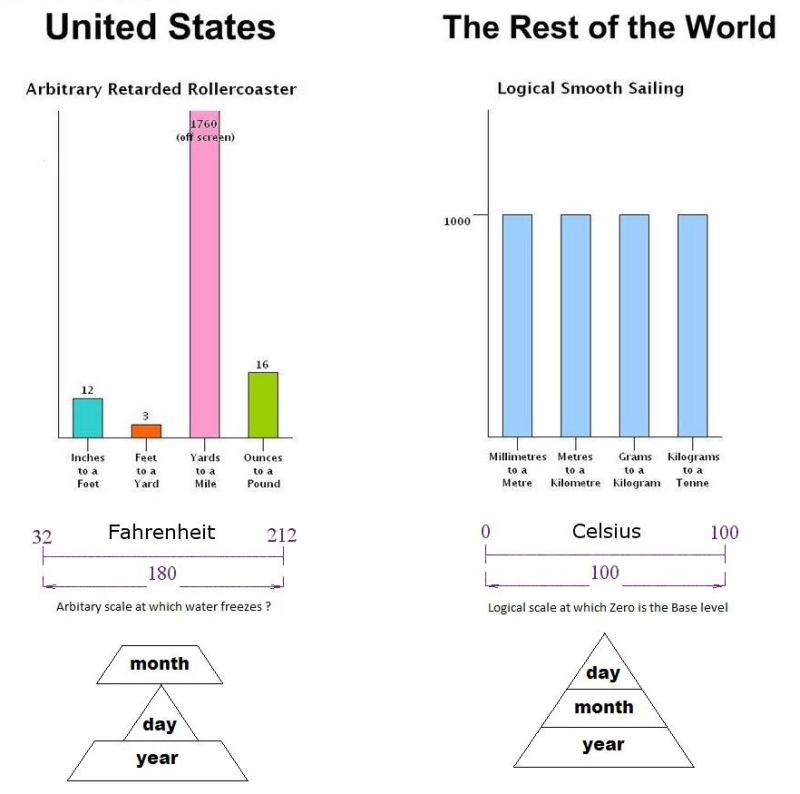this post was submitted on 30 Jun 2023
145 points (89.6% liked)
Standardization
453 readers
1 users here now
Professionals have standards! Community for all proponents, defenders and junkies of the Metric (International) system, the ISO standards (including ISO 8601) and other ways of standardization or regulation!
founded 2 years ago
MODERATORS
you are viewing a single comment's thread
view the rest of the comments
view the rest of the comments

US was supposed to get the metric system but alas... Pirates
The reason the Fahrenheit scale does not put the freezing point of water at 0 degrees as the Celsius scale does is that Daniel Fahrenheit, the inventor of the scale, did not use the freezing and boiling points of water as the basis of his scale.
As for the date formatting, here is an interesting read on it and how it relays more information faster.
Pirates stealing our kilogram weight thus preventing the metric system is one of the funniest bits of US history to me.
Yep, was going to reply, the date format actually has benefits (that were likely not intended at first when it was popularized). The format is generally accepted to have come from the way we actually speak dates in American English. We would say, "June 30th 2023". Thus, when writing in notation before the advent of computers (and thus before short form was popularlized 06/30/23) they would write "Jun. 30, 2023", written in the order it is spoken. The unintended benefits of this system are that is more efficiently conveys information as presented by @[email protected] .
Regarding the first part of his reply (regarding the Fahrenheit scale), I wanted to elaborate for anyone curious. The scale was created using a eutectic solution of water and either ammonium chloride or sea salt. The key part being the solution is eutectic, meaning it will stabilize its temperature. Fahrenheit took this stable temperature to be 0 degrees, and used the work of Ole Romer to help define more of his scale. He wanted finer granularity than the Romer scale allowed, and thus multiplied romers values by 4 (to remove the fractions of common points like water melting, and body temp), and then calibrated his scale to allow for an even separation between the boiling point of water (32), and average body temp (96 on his scale). This allowed him to easily mark points between those 2 known values evenly. The scale was then again readjusted to the modern version when it was observed water boiled near, but not at 212 degrees. They adjusted it so that water would freeze at 32, and boil at 212. All of this work (before the final adjustment), was before Anders Celsius created the celsius scale and popularized the freezing/boiling point fixed points method.
Then came along Macquorn Rankine who wanted to essentially make the kelvin scale (where a change of 1 Kelvin is = 1 Degree Celsius of change), but for Fahrenheit. So a change of 1 Degree Rankine = 1 Degree Fahrenheit. This is mostly only used by engineers/scientists when dealing with heat calculations. Being a process engineer in the steel industry currently, I have not yet come across it being used at least in my industry.